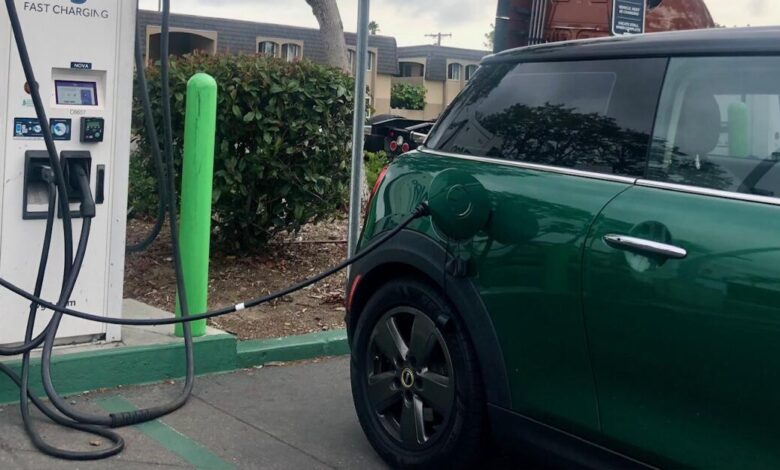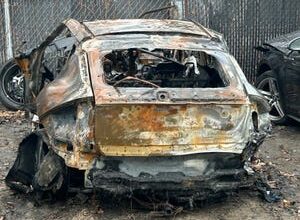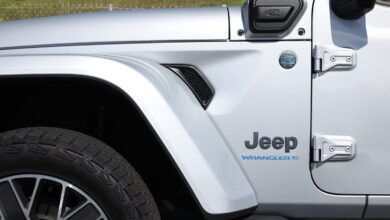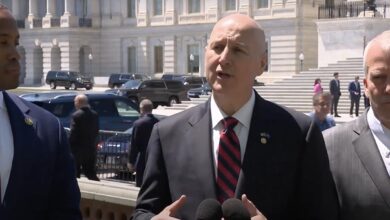Sales of zero-emission vehicles in California up slightly

After two consecutive quarters of declines, the number of zero-emission vehicles sold in California ticked up slightly in the first three months of this year.
According to data compiled by the California Energy Commission, the combined number of battery electric vehicles, plug-in hybrids and hydrogen fuel cell vehicles came to 102,507 in the first quarter — an increase of one-third of 1 percent compared to the fourth quarter of 2023.
That’s not much, but the figures represent the most zero-emission vehicles ever sold in the Golden State in the first quarter of any year.
State policymakers cheered the news, with David Hochschild, chair of the California Energy Commission, saying in a news release that the clean vehicle transition “is in full swing, with nearly one in four California car shoppers choosing to go electric over the last year resulting in record sales.”
The commission took to social media, highlighting the state’s year-over-year growth.
But an auto sector analyst was more wary of the first quarter numbers.
“It’s a slight increase, almost a rounding error,” said Ivan Drury, senior manager of auto insights at Edmunds.com. “I think the underlying issue is you’re not seeing the growth that you previously did. You can’t have quarters in which there are plateaus, you have to continually grow.”
Drury cited numbers that raise caution flags for him. He cited numbers compiled by Edmunds showing that electric vehicles, or EVs, in California are sitting on dealership lots an average of 62 days before being sold or leased.
“That’s a long time,” Drury said. To him, it indicates demand is slackening.
By comparison, the average plug-in hybrid sits on the lot for 49 days before selling, the average for a gasoline-powered car or truck in California is 44 days, while the average for a hybrid without a plug is just 21 days.
What’s the difference between the two hybrids? A plug-in hybrid runs on electricity for about 20 to 40 miles and then calls on its gasoline-powered engine to extend the vehicle’s range. By contrast, traditional hybrids without a plug rely on the car’s electric motor when operating at low speeds and then shift to the internal combustion engine when additional power is needed.
Gov. Gavin Newsom in 2020 issued an executive order mandating the elimination of all new sales of gasoline-powered passenger vehicles in California by 2035. While plug-in hybrids count toward reaching the state’s goal, hybrids without plugs do not.
The fact that hybrids without plugs sell after an average of 21 days tells Drury that customers want them.
“You get the best of both worlds,” he said. “You never have to worry about plugging anything” into an electric charging station while the vehicle gets better gas mileage.
California Energy Commission data does not include sales of hybrids without plug-ins but the California New Car Dealers Association does. It released its first-quarter numbers on Monday and showed a decrease in registrations for traditional hybrids of less than 1 percent in the first three months of this year compared to the fourth quarter of 2023.
If hybrids without plug-ins are supposedly so popular, why did the numbers decline?
“Yes, their share was either flat or down slightly but that’s only because they’re selling out,” Drury said. “They’re selling so fast that (dealers) just don’t have enough capacity to bump up market share … There’s only a handful of automakers that even have (traditional) hybrids available.”
Questions about sales figures are important because California’s mandate banning the sale of new gasoline-powered vehicles by 2035 has staggered benchmarks that begin in two years.
Under standards passed by the California Air Resources Board, at least 35 percent of model year 2026 passenger cars and trucks sold in the state will be electric vehicles, plug-in hybrids or hydrogen fuel cell vehicles. The numbers ramp up each year, going to 68 percent in 2030 and 100 percent by 2035.
State policymakers have long said they are confident the requirements will be met.
Of the first quarter numbers, Hochschild of the energy commission said, “This is good news for all Californians as our success delivers cleaner air statewide and drives significant investment in our emerging zero-emission vehicle industry.”
Earlier this week, the EV sector received some startling news when Tesla CEO Elon Musk laid off hundreds of employees in the company’s electric charging business, including the head of the division.
The move figures to have ripple effects because automakers such as Ford and GM have been gearing up to equip their EVs with plugs that can access Tesla’s Supercharger network via an expansion of the North American Charging Standard, known as NACS.
Taking to X, Musk said Tesla still plans grow the supercharging network, “just at a slower pace for new locations and more focus on 100% uptime and expansion of existing locations.”
But questions remain.
EV analyst Loren McDonald said on his LinkedIn page that disruption in Tesla’s fast-charging network “could have the unintended consequence” of discouraging potential customers from buying Teslas and may “also push some new car buyers to not buy” battery electric vehicles from other automakers, too.
Zero-emission vehicle sales in California
Combined total of EVs and plug-in hybrids, by quarter
Q1 2023 101,826
Q2 2023 118,776
Q3 2023 118,513
Q4 2023 102,168
Q1 2024 102,507
Source: California Energy Commission



